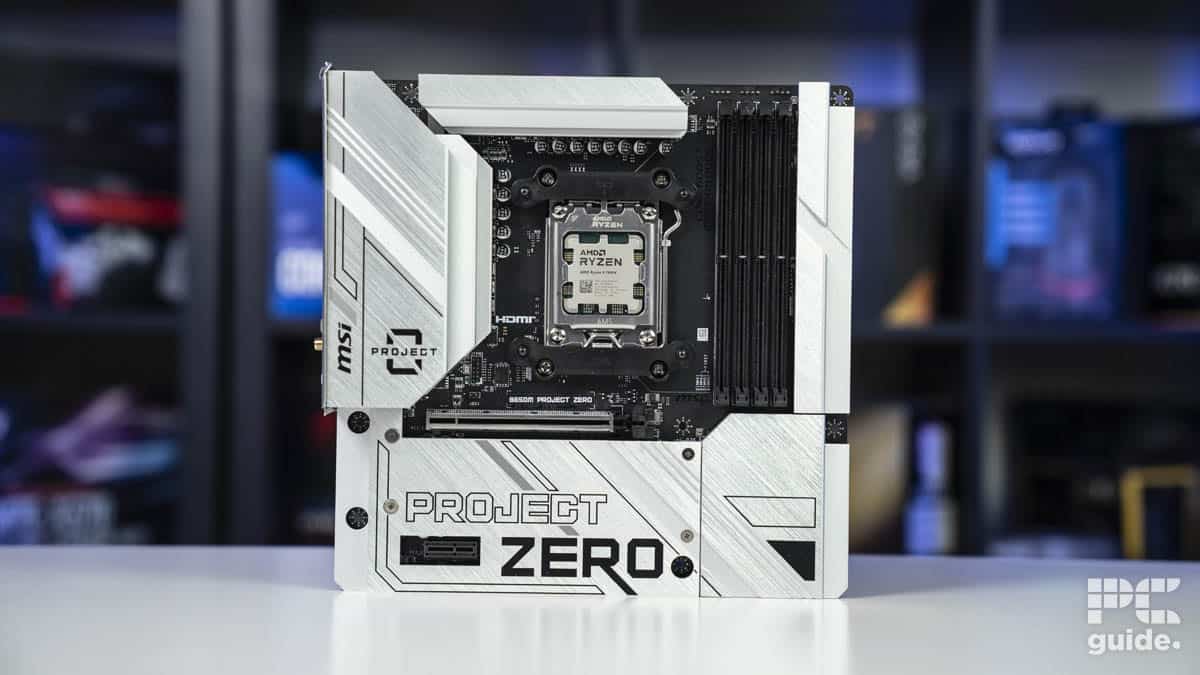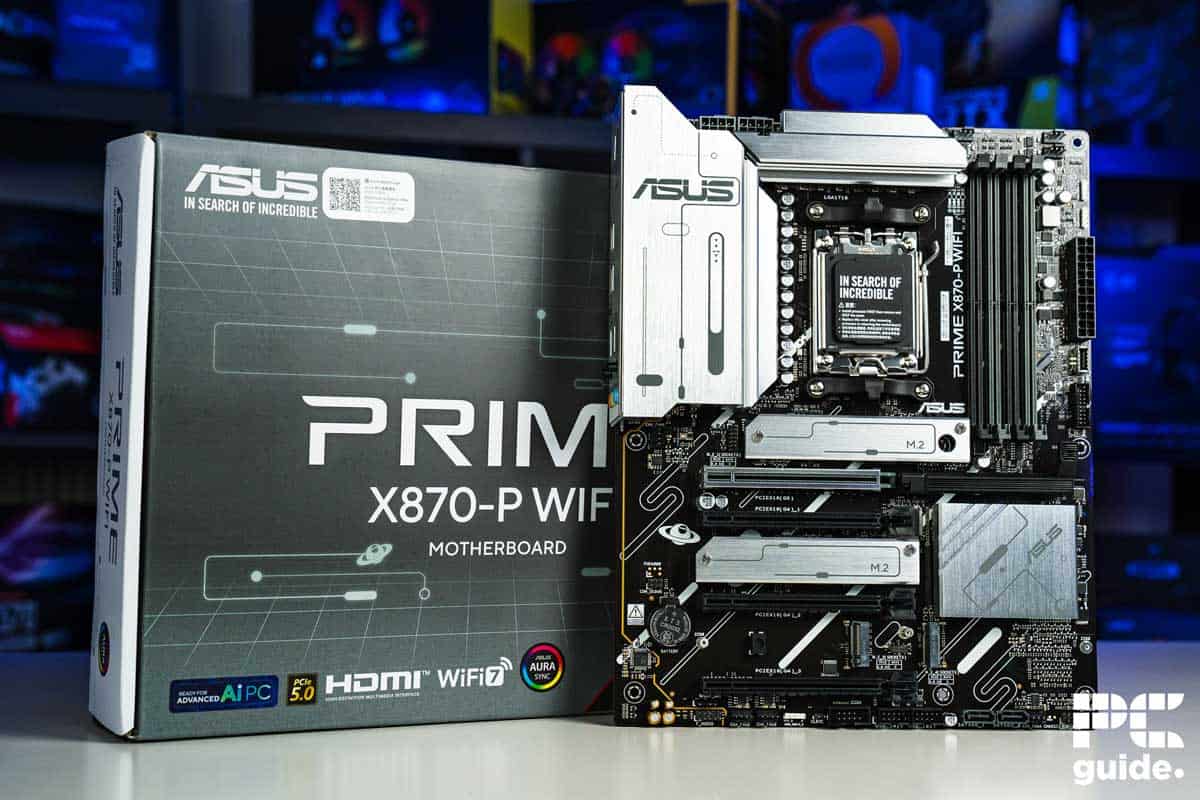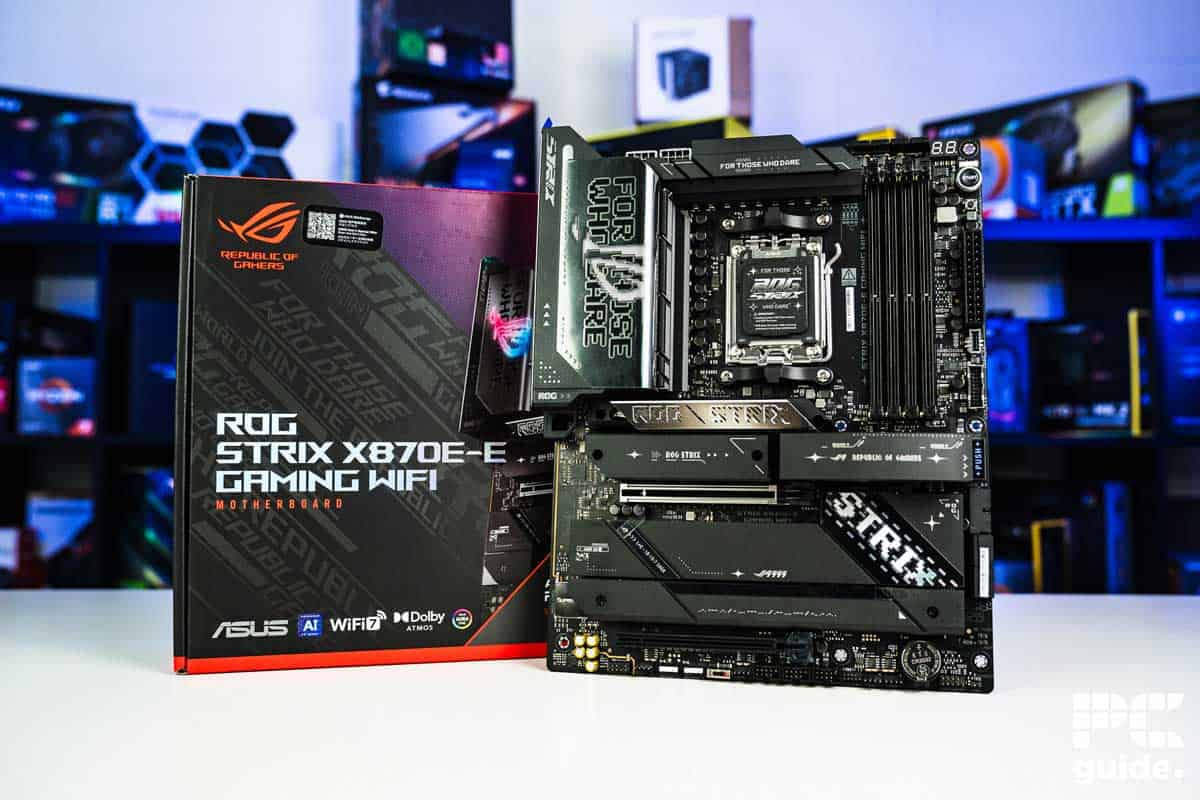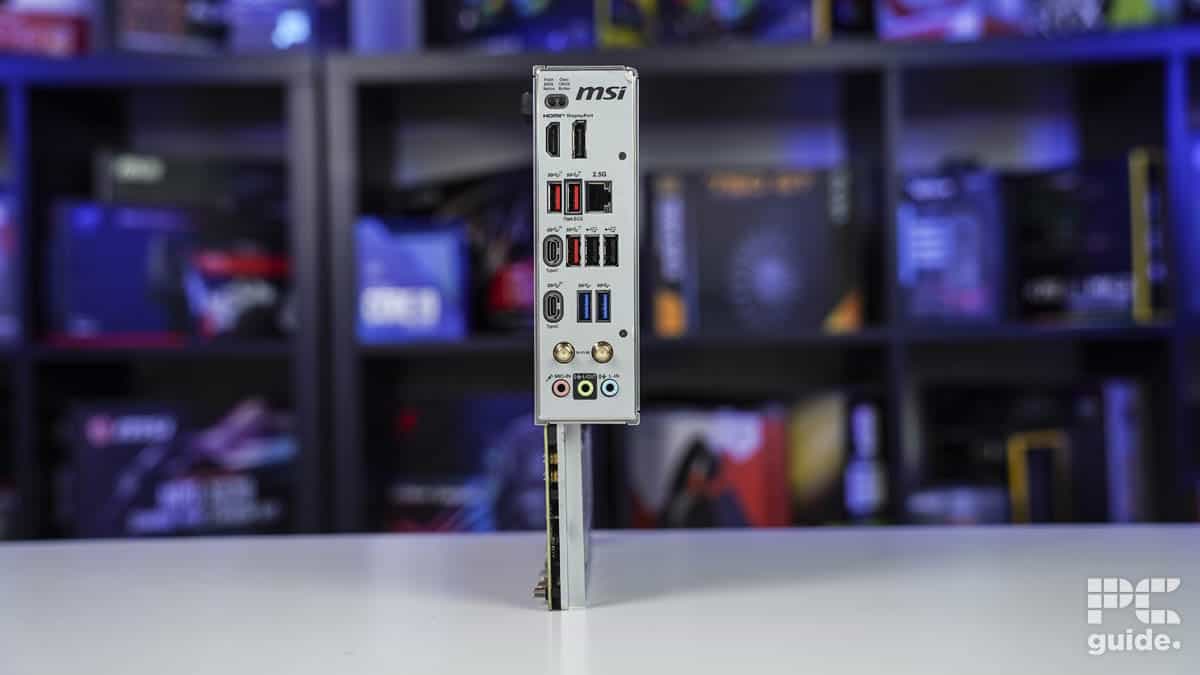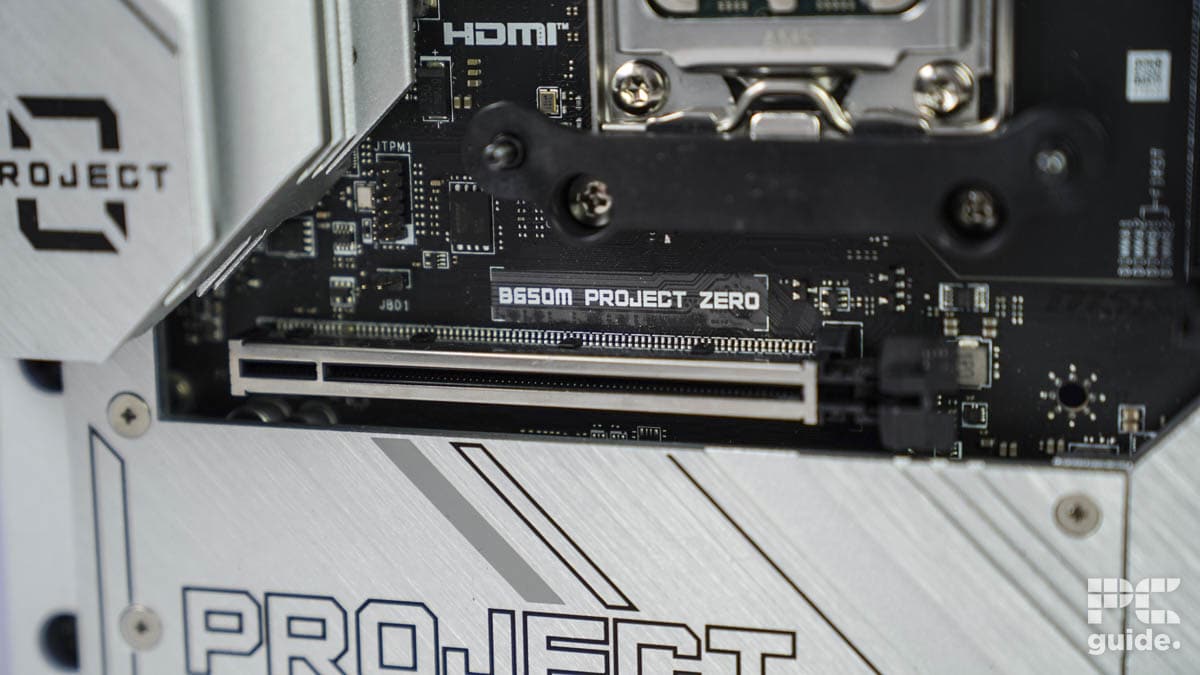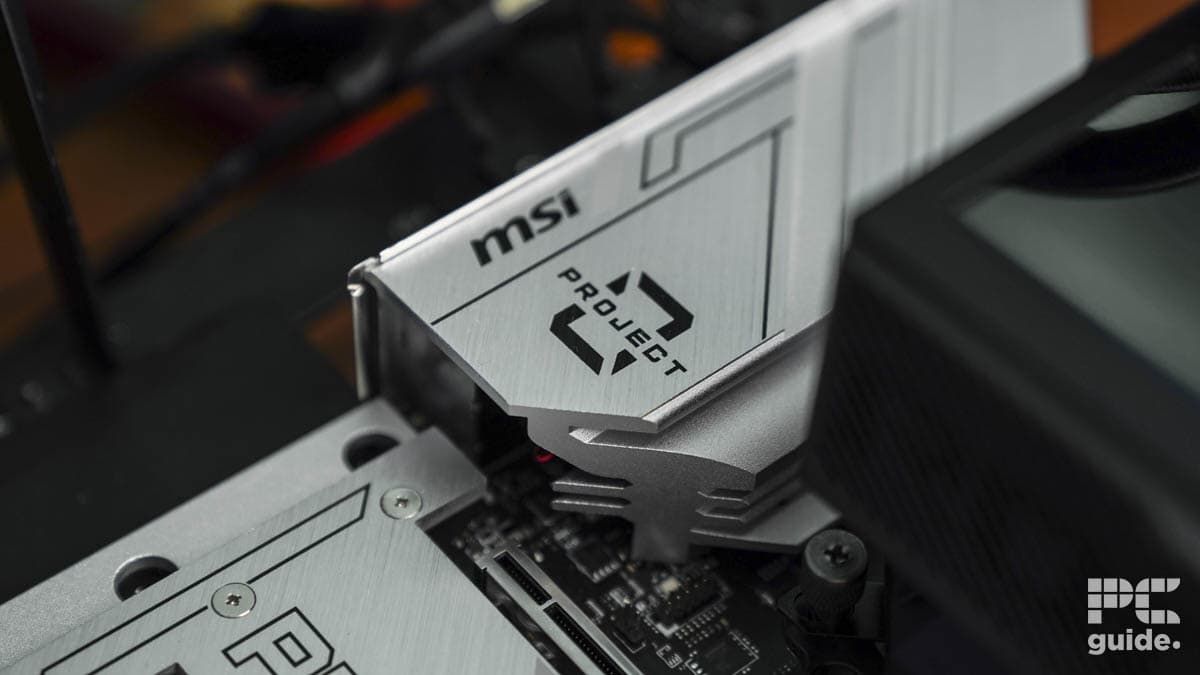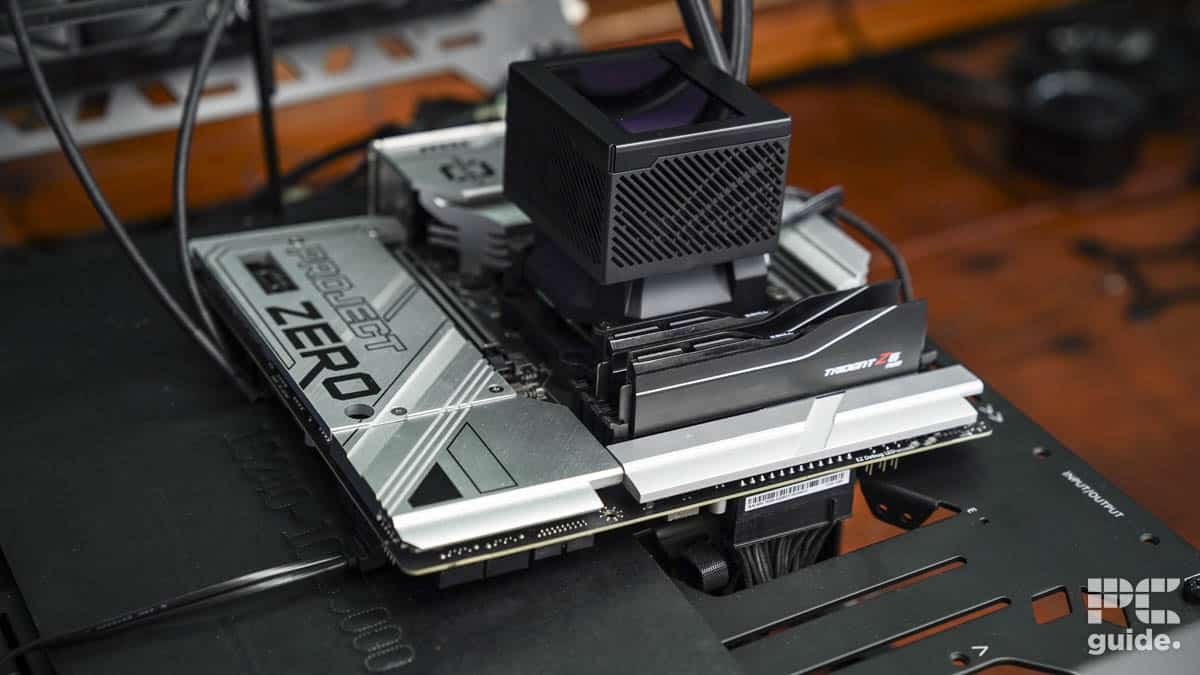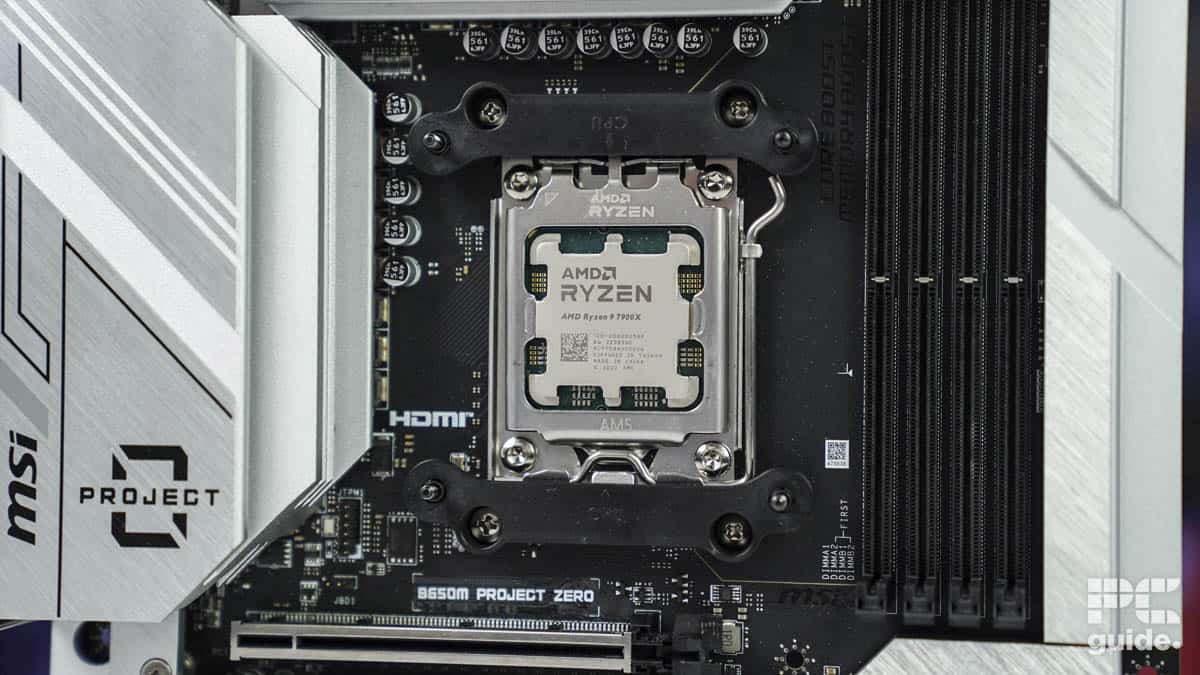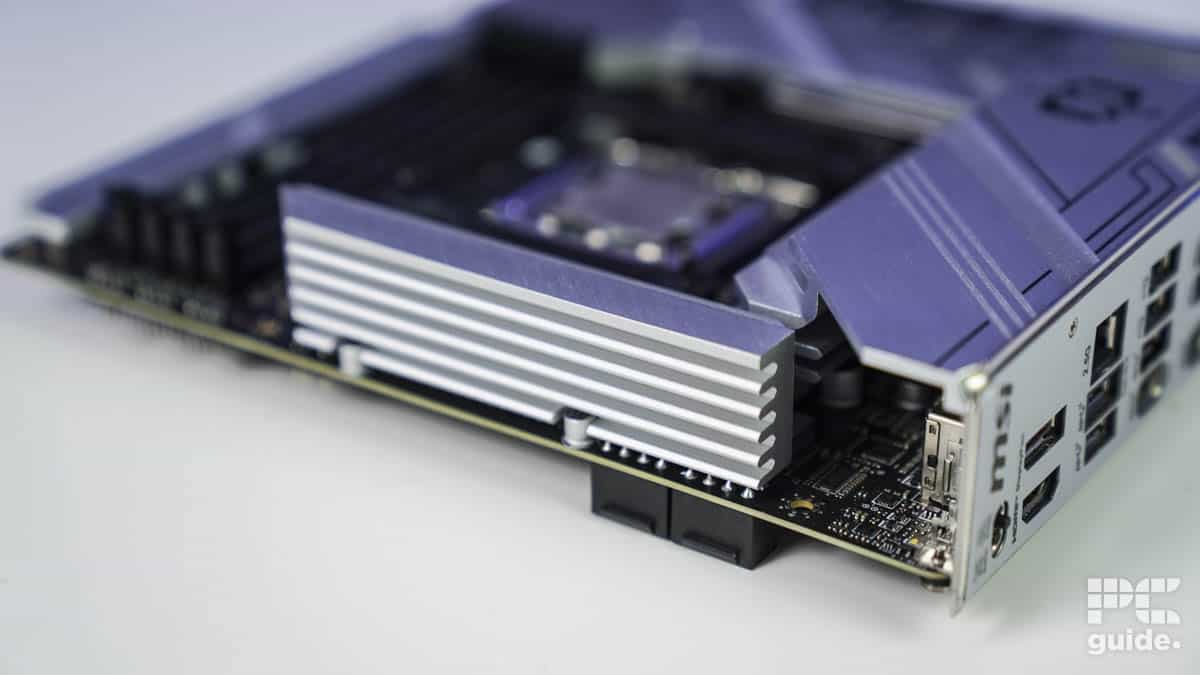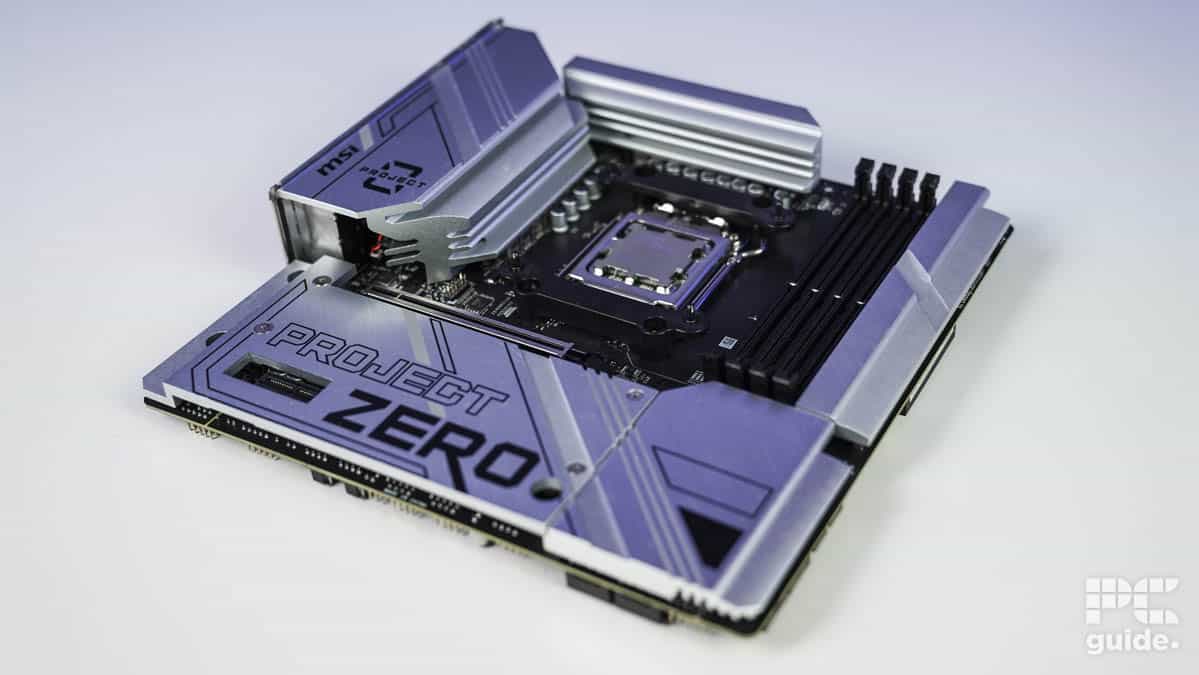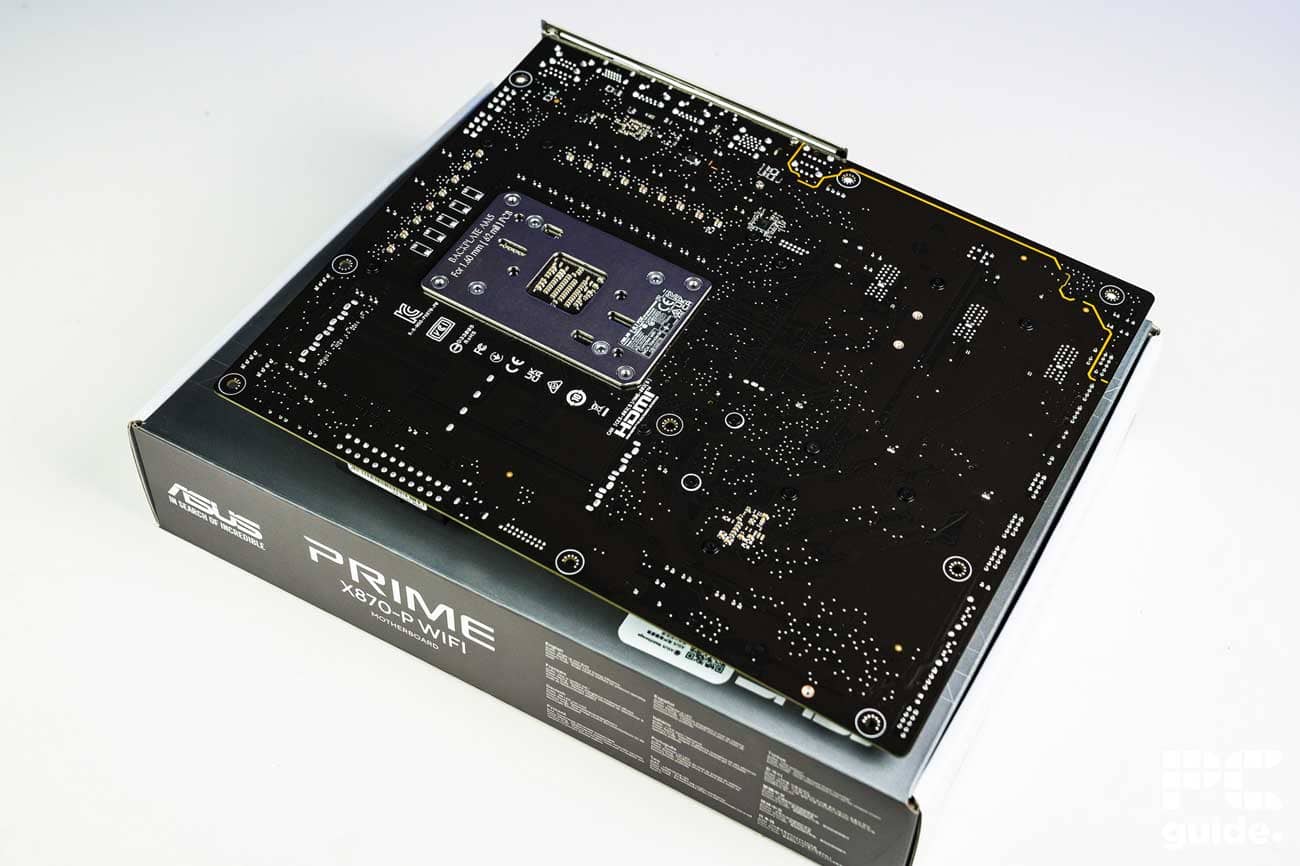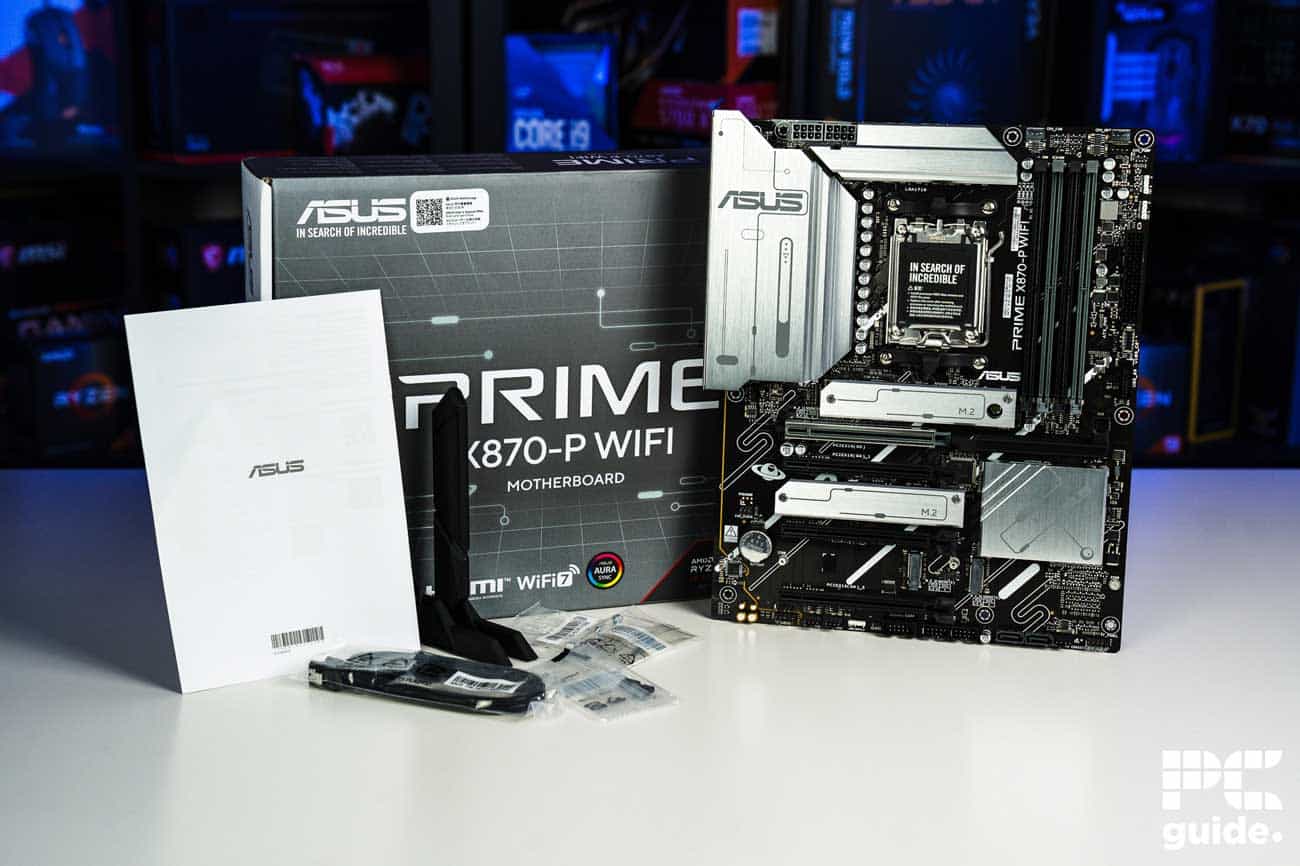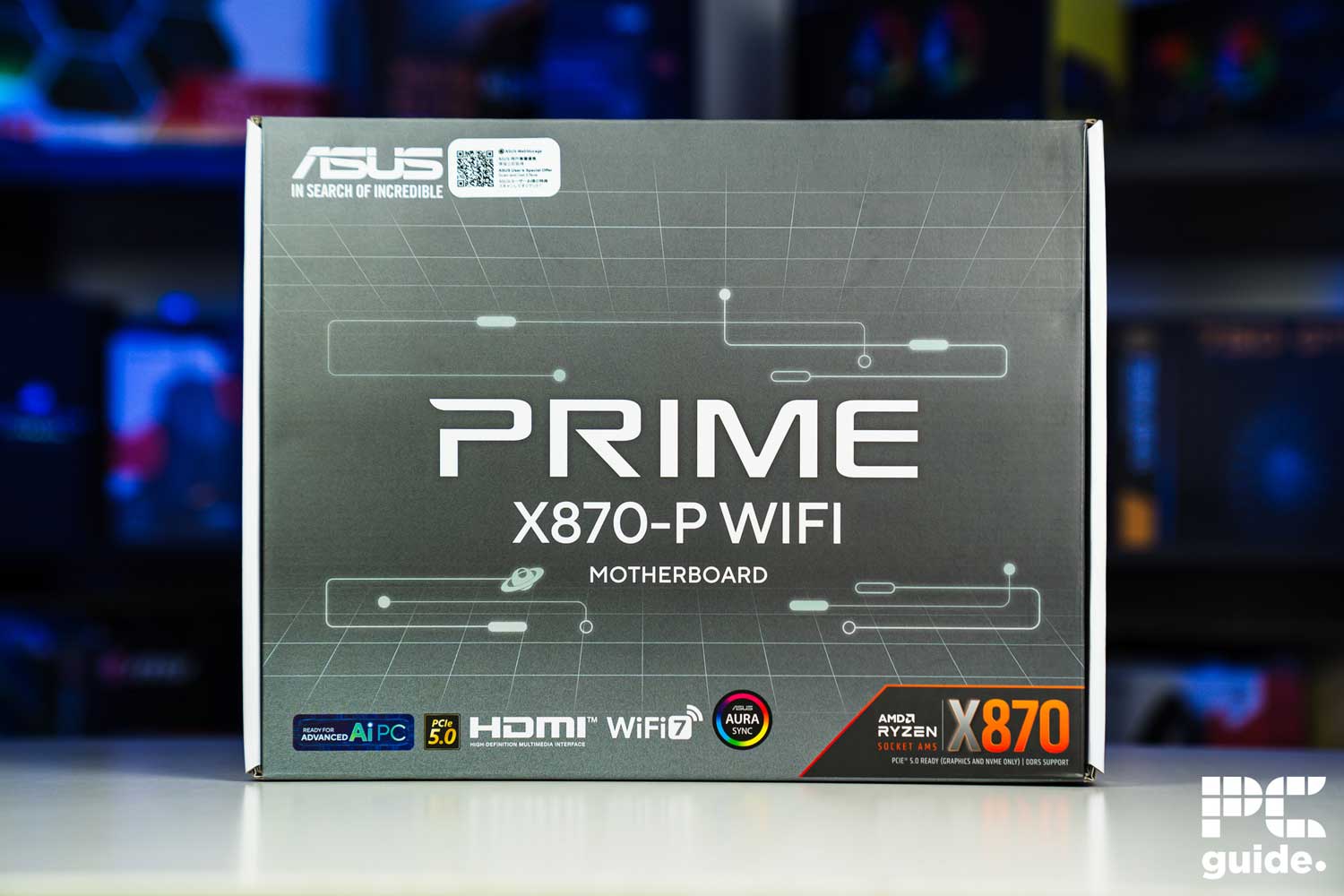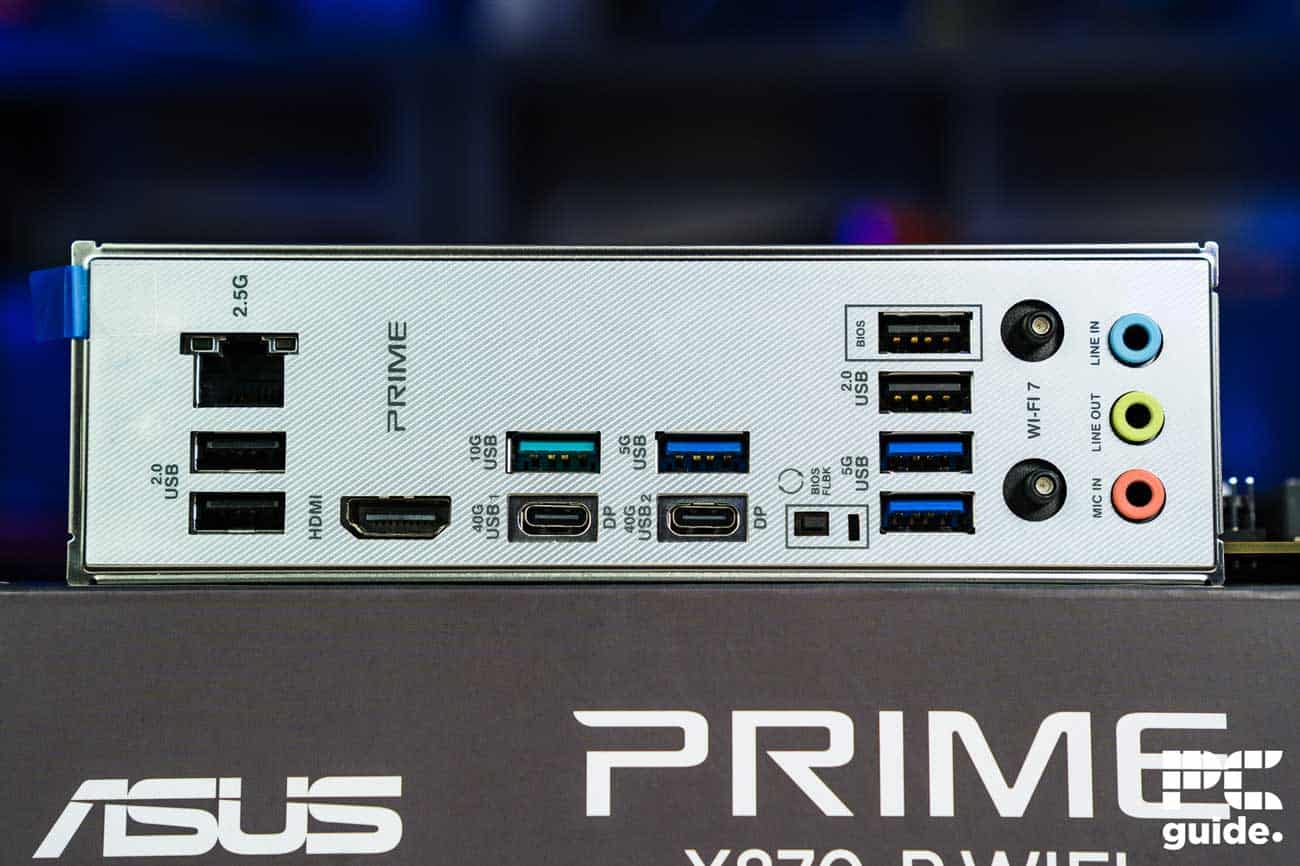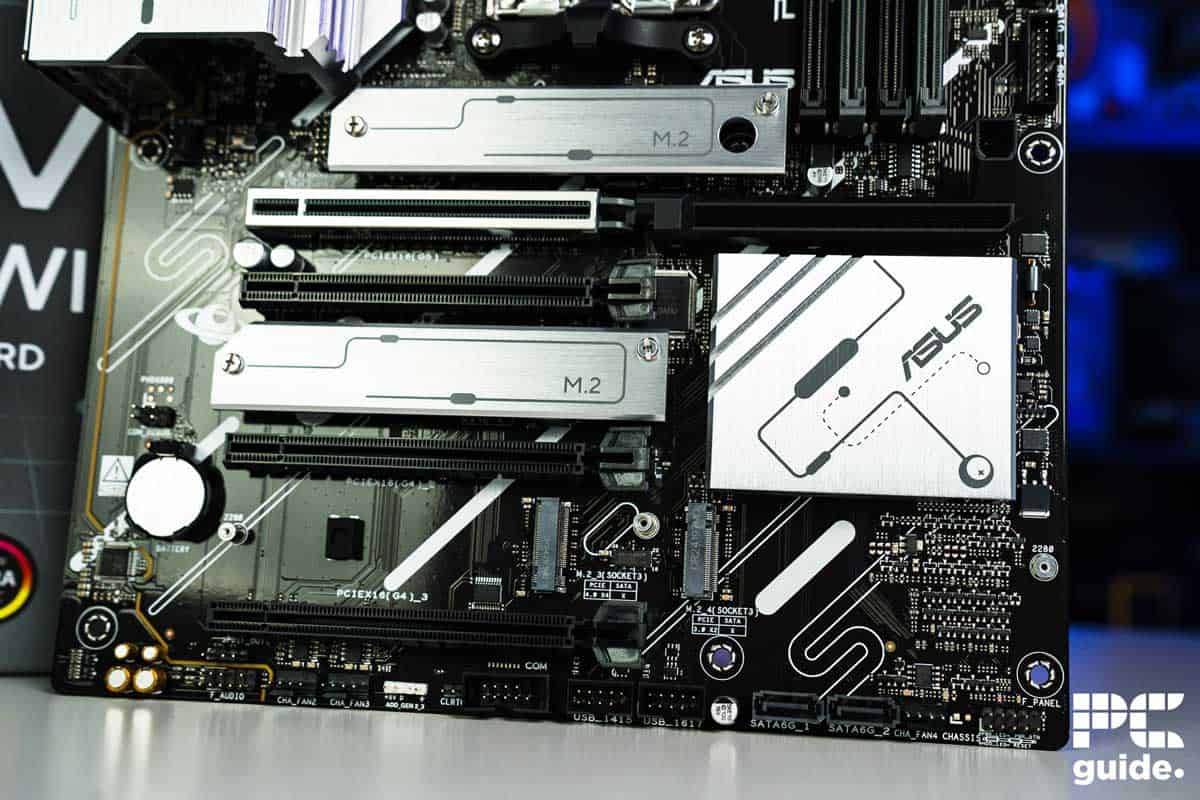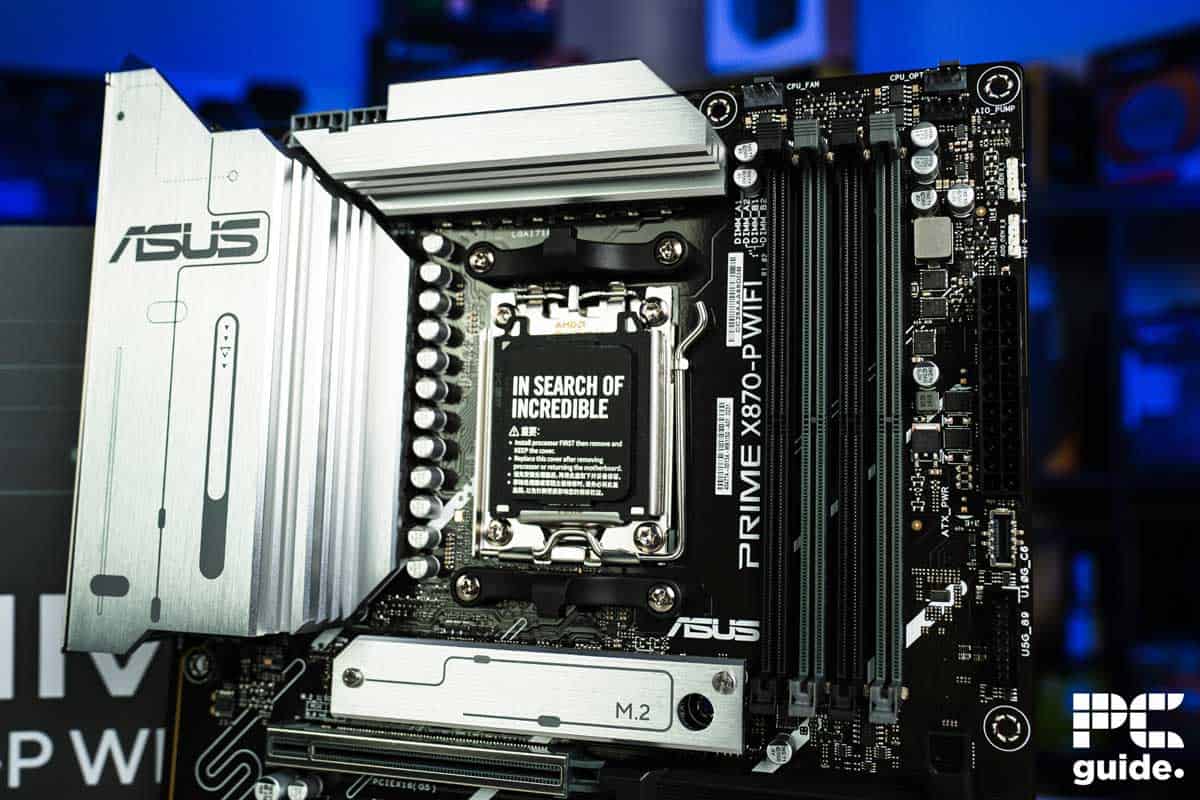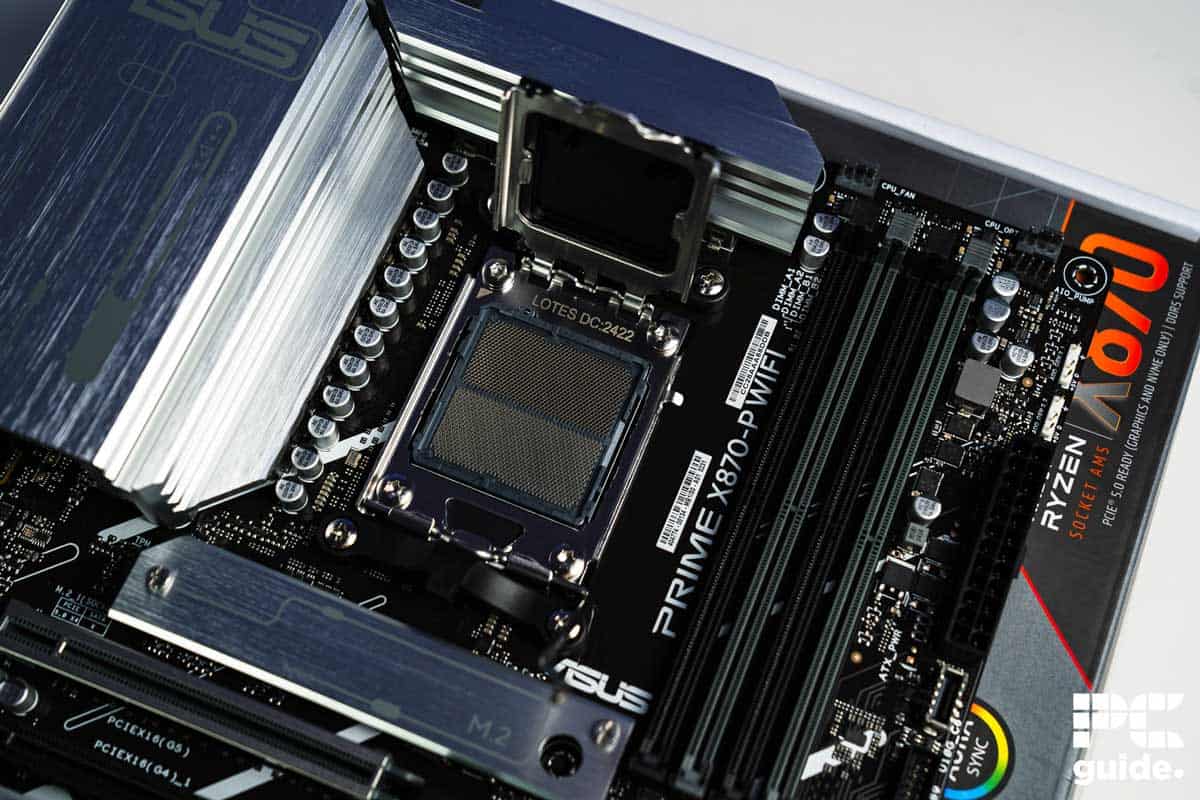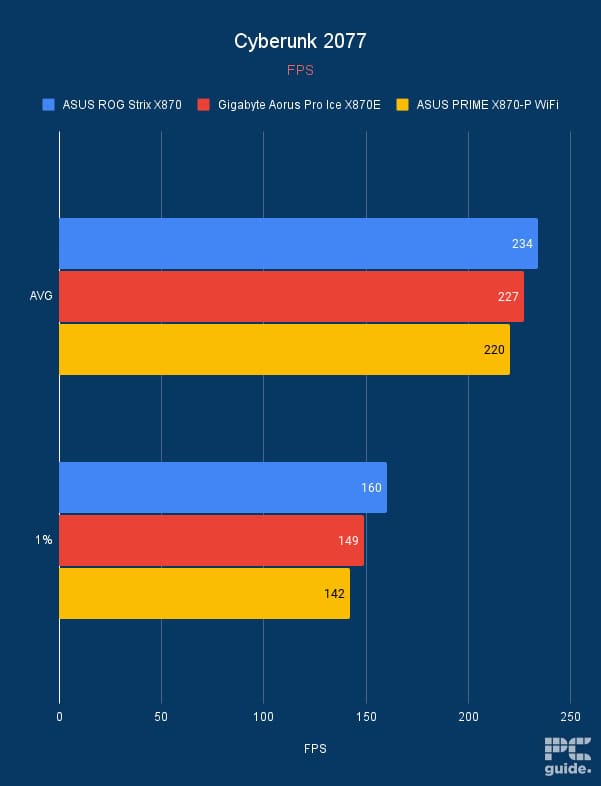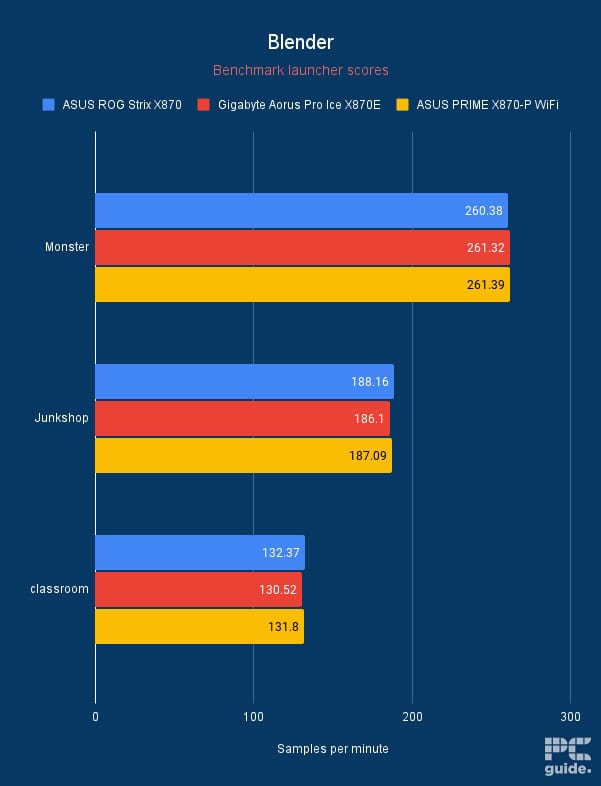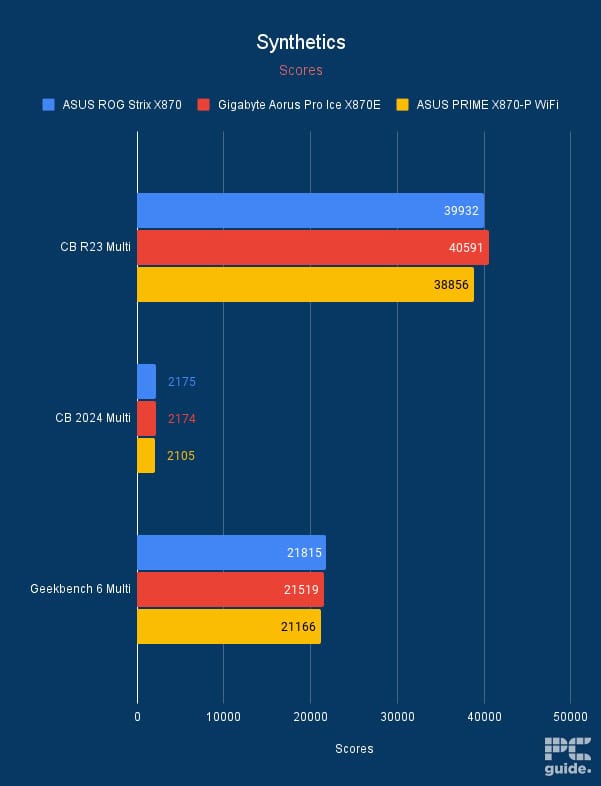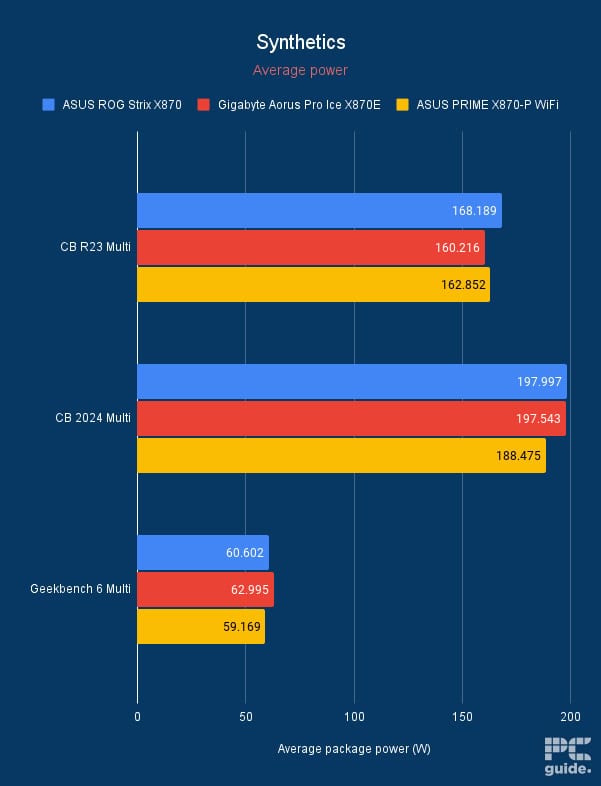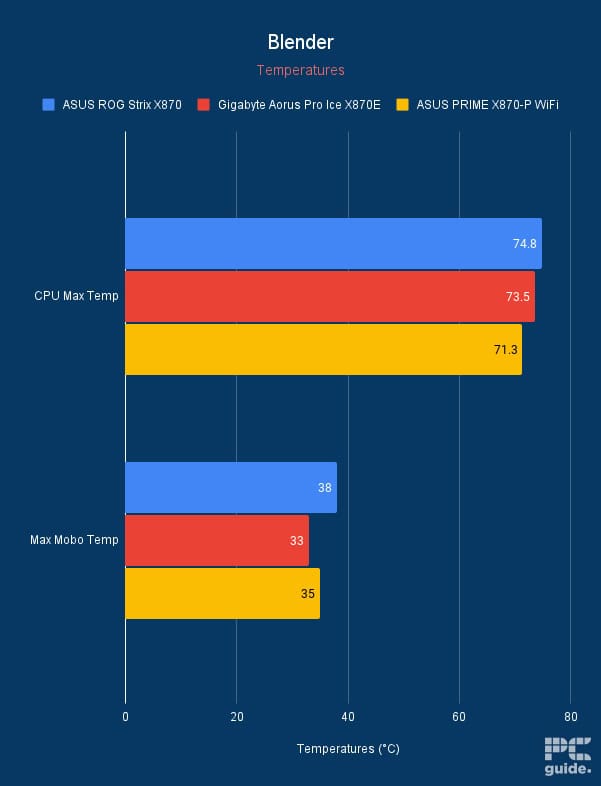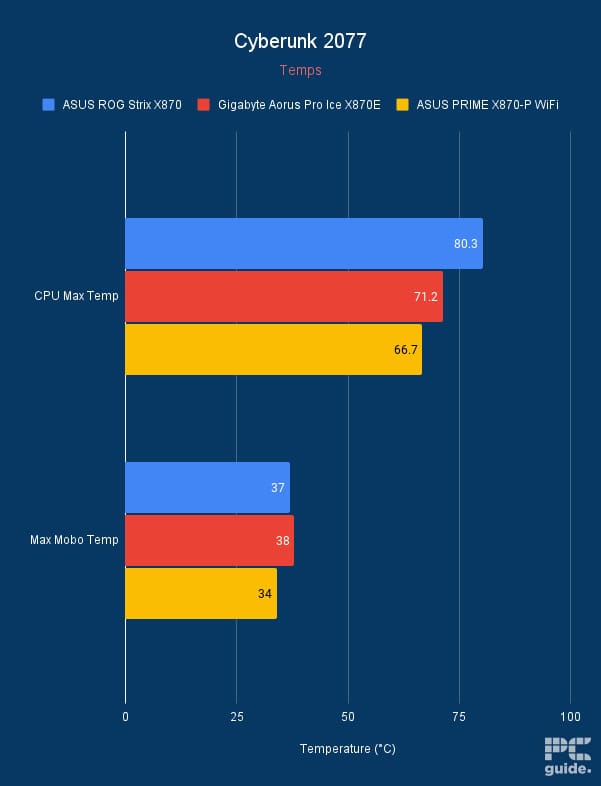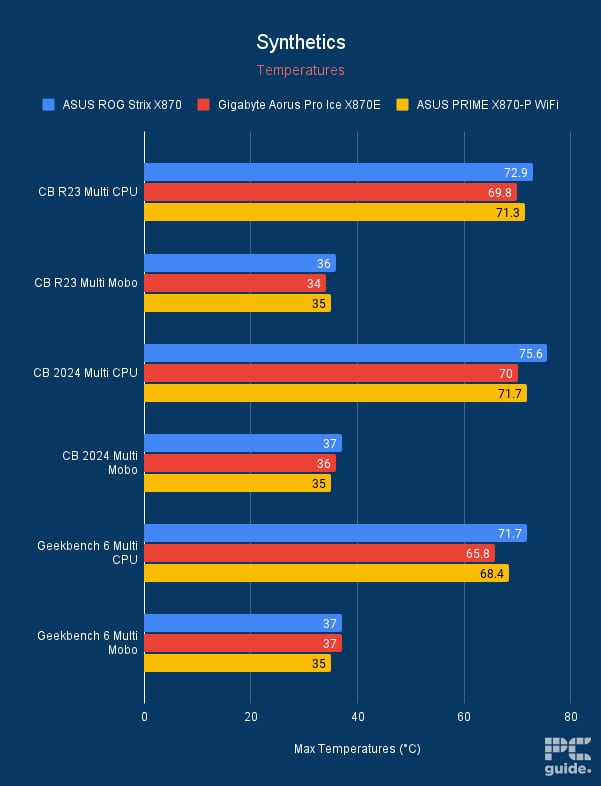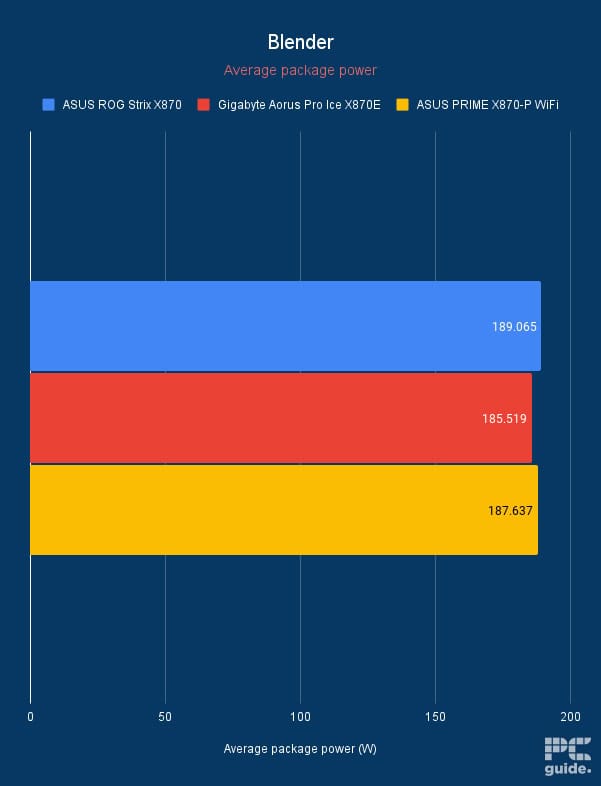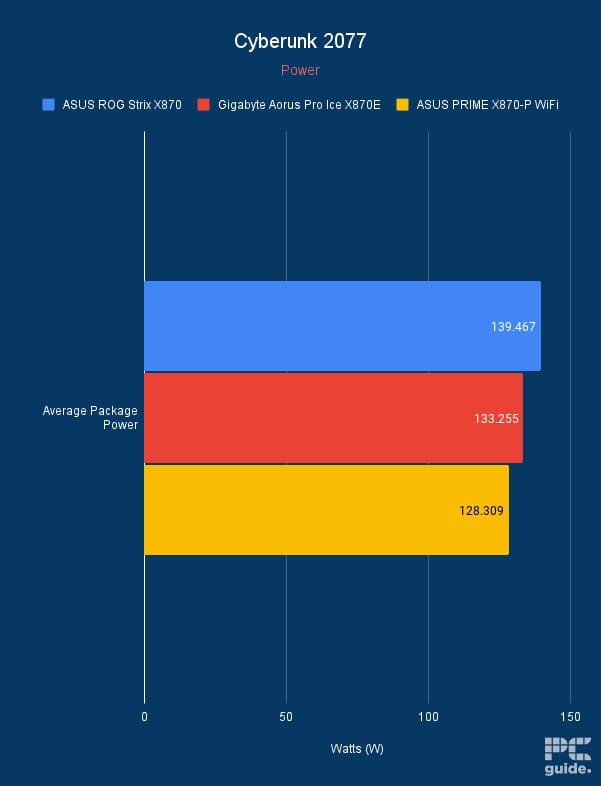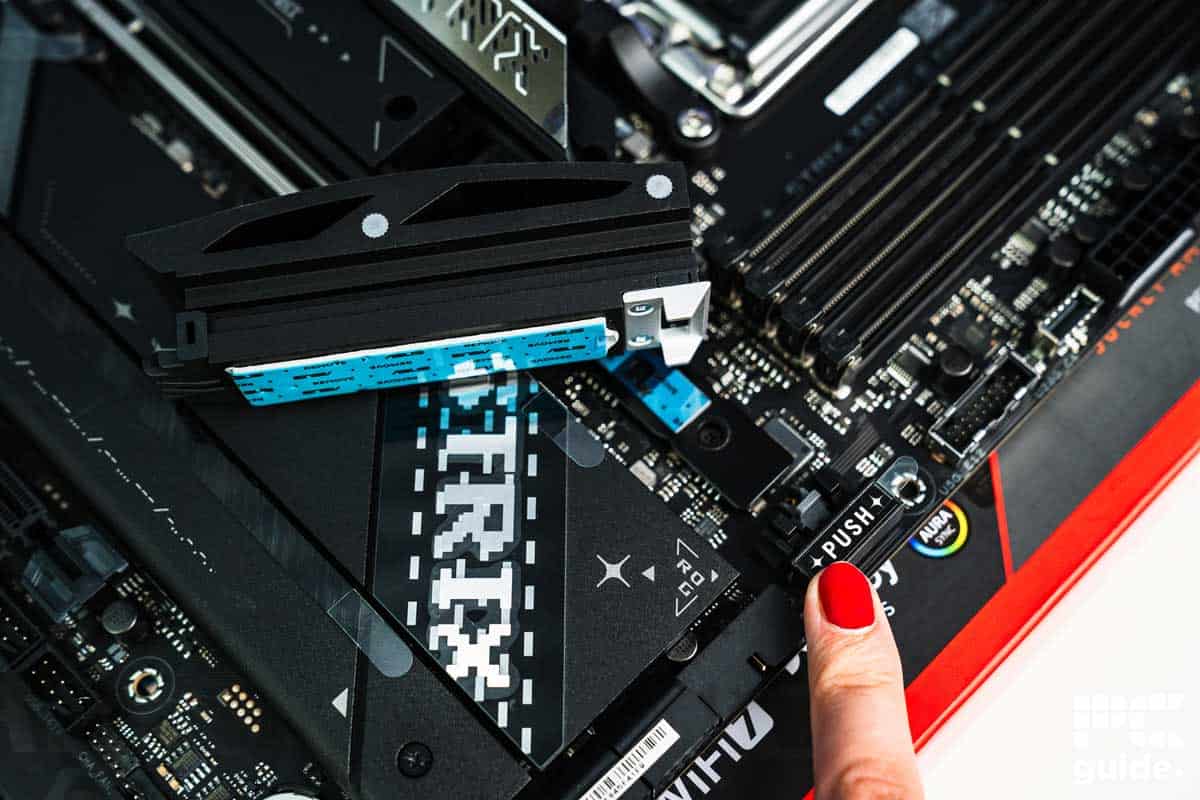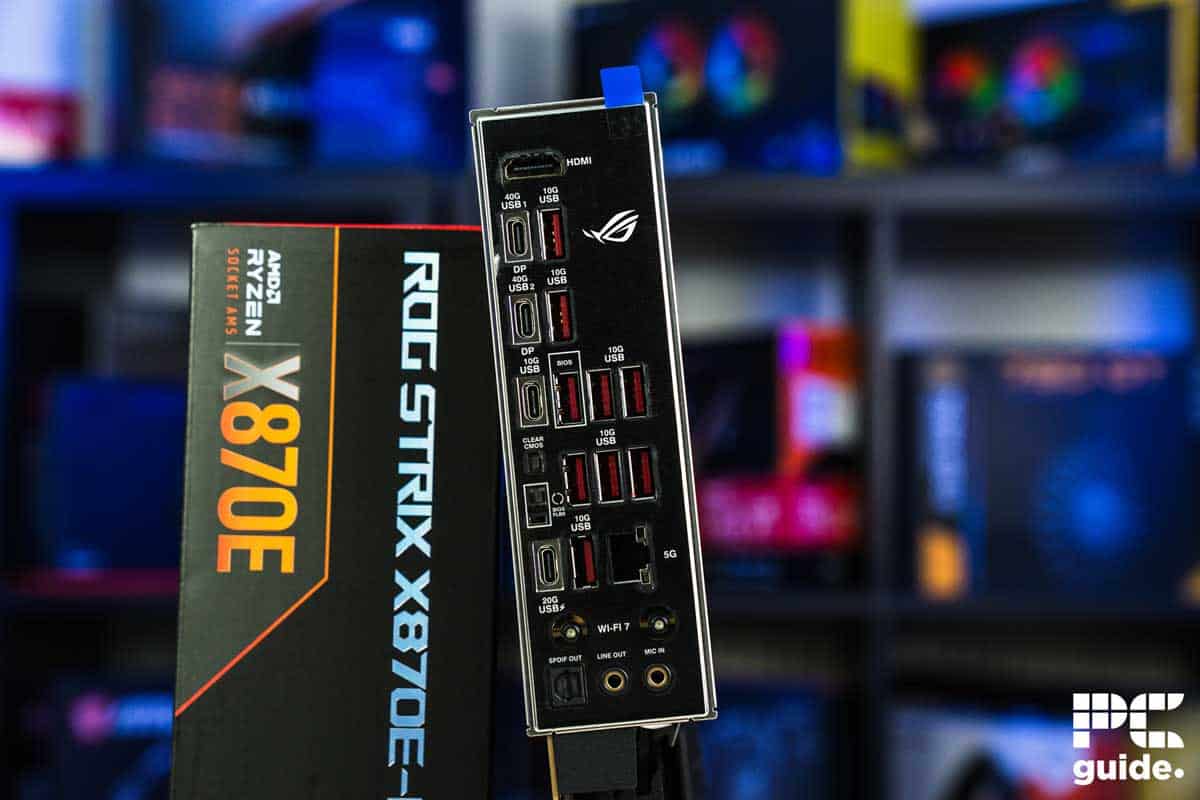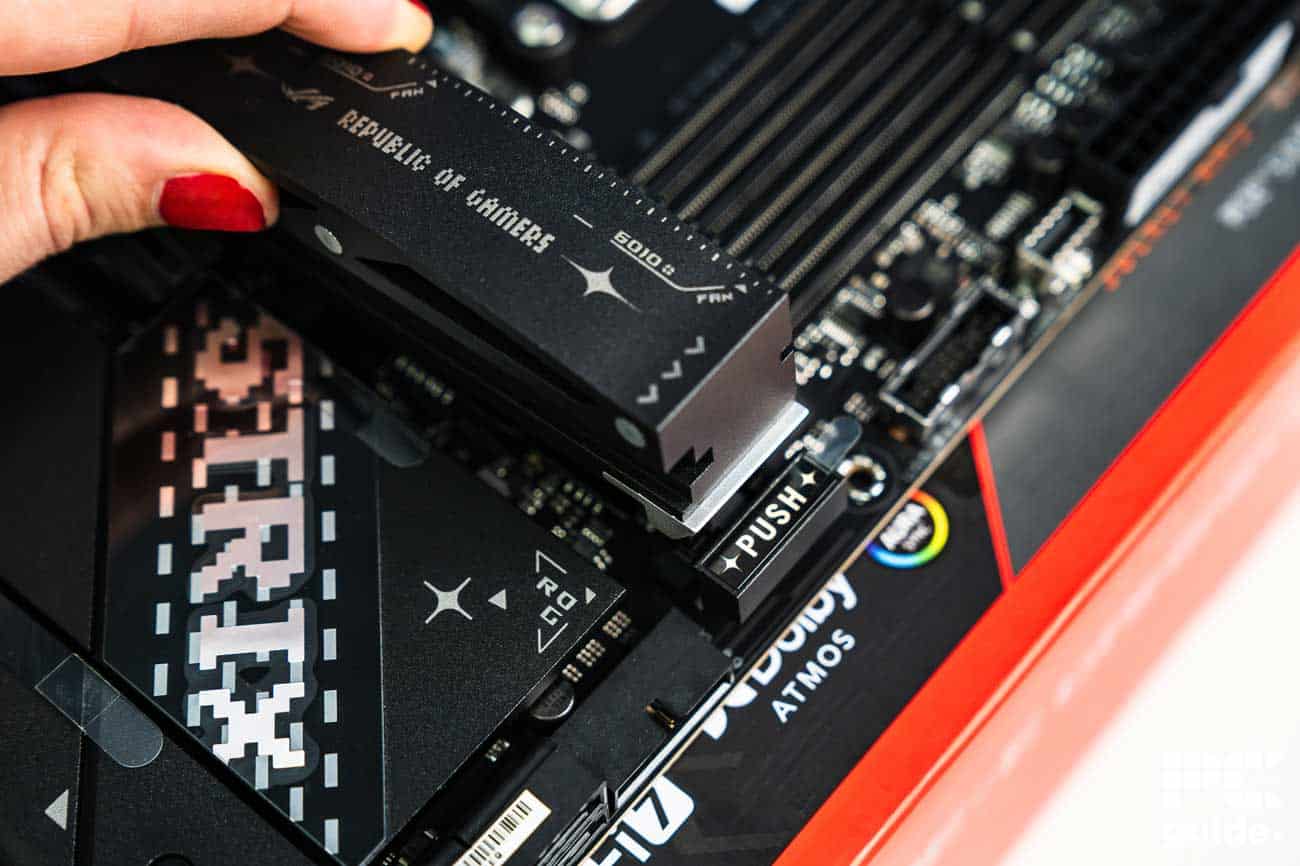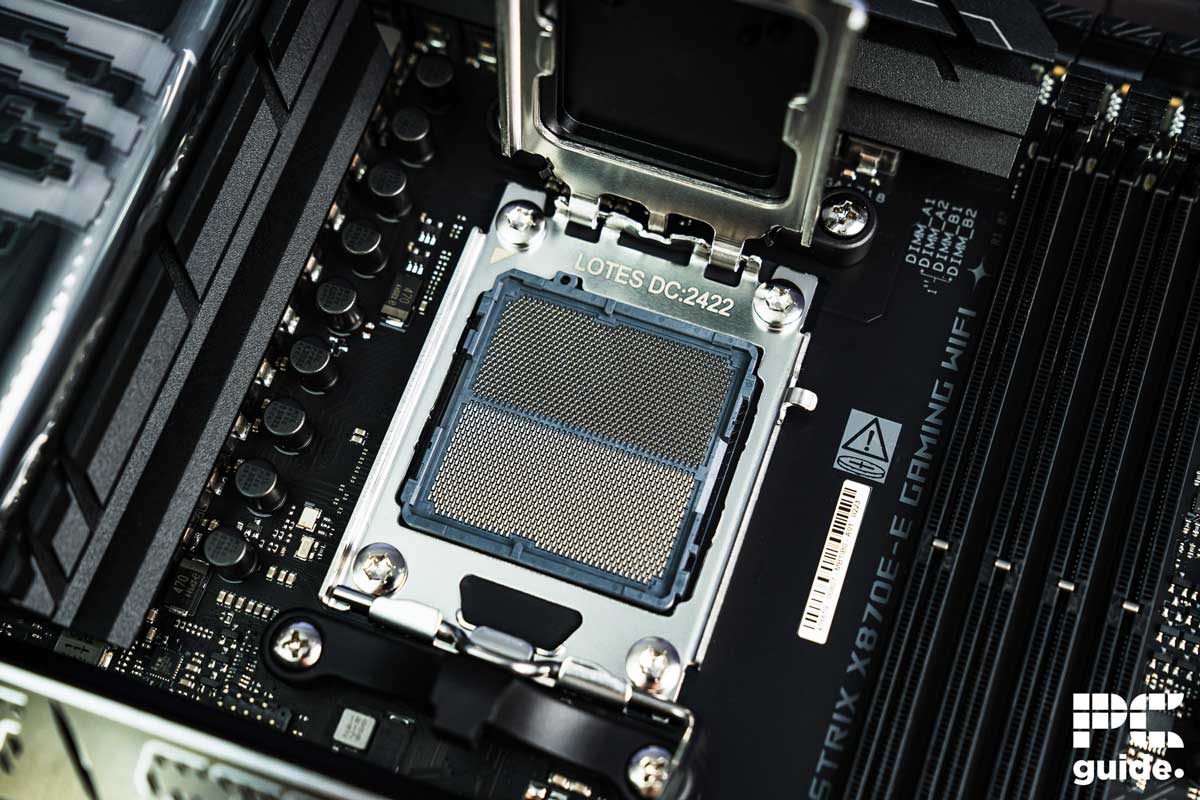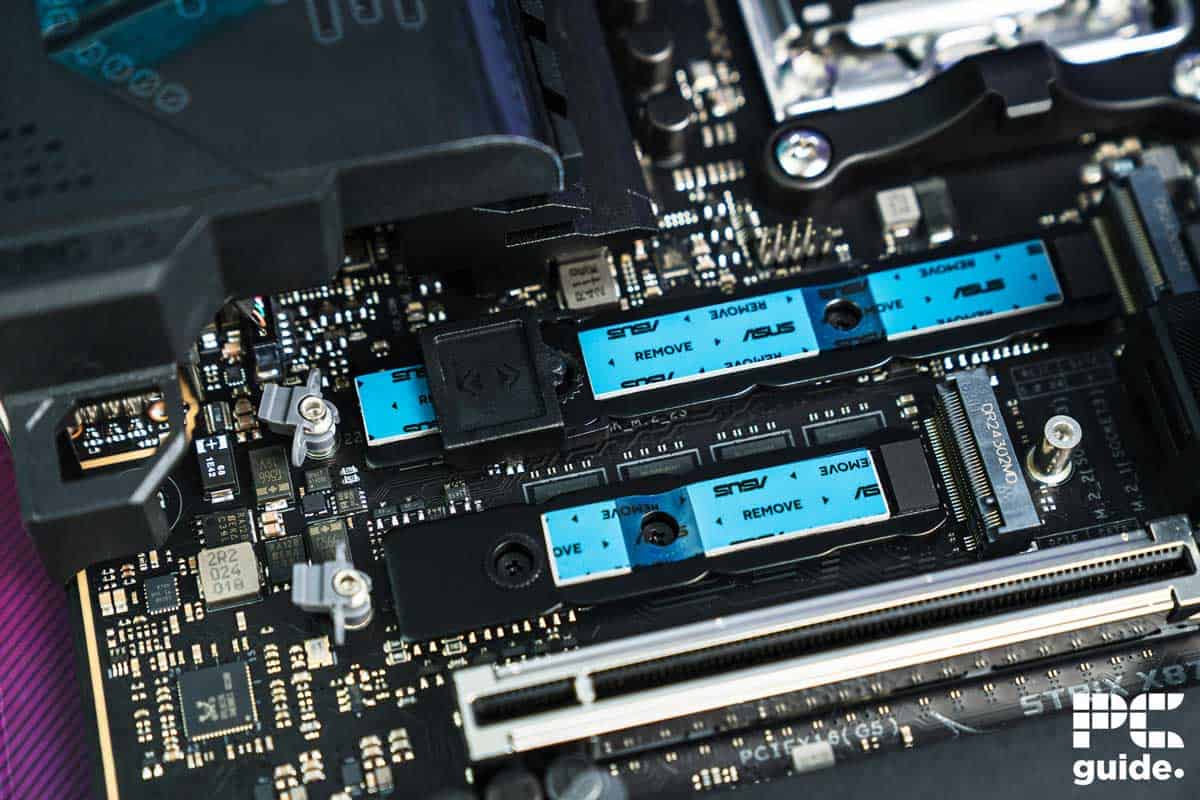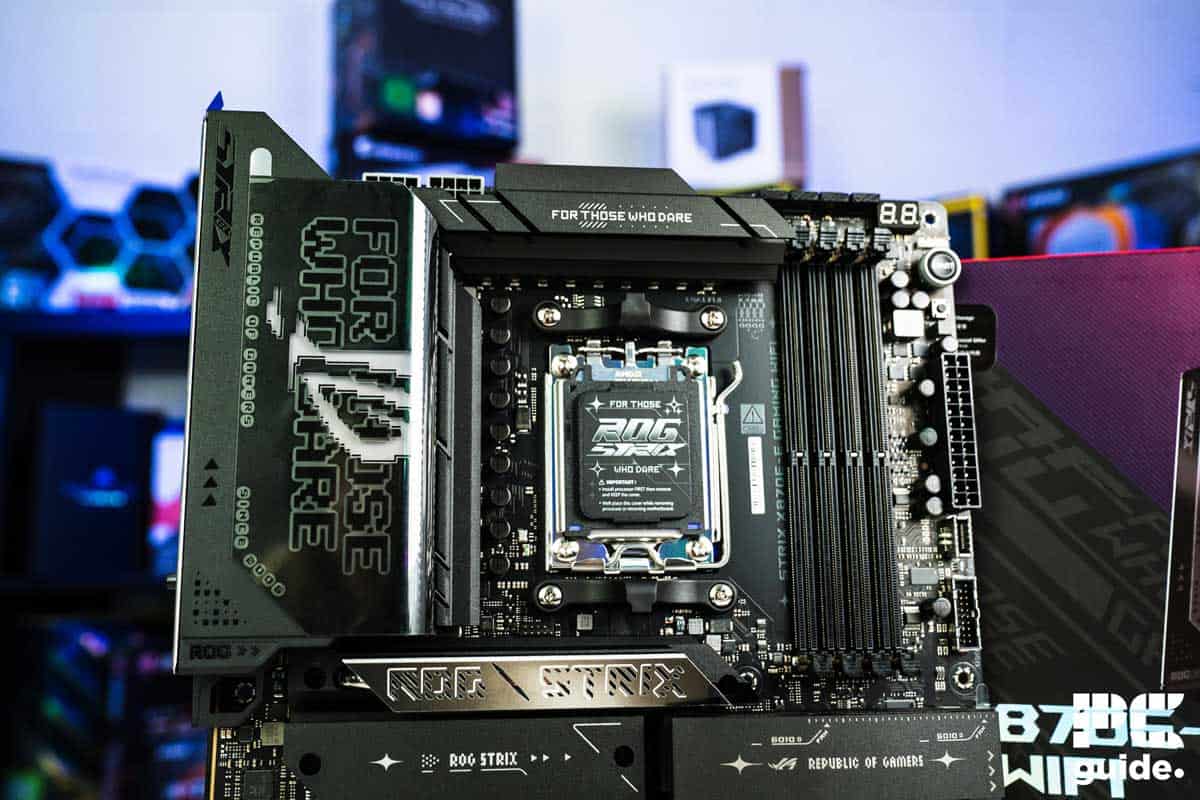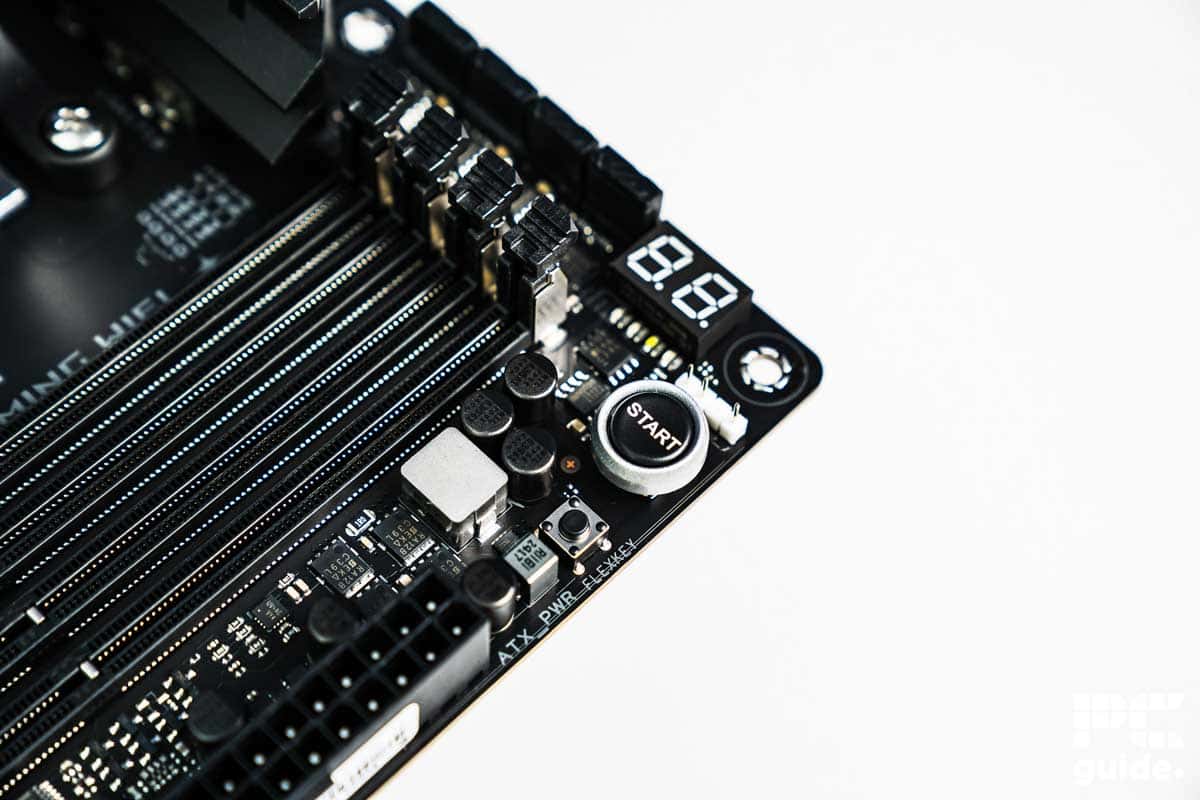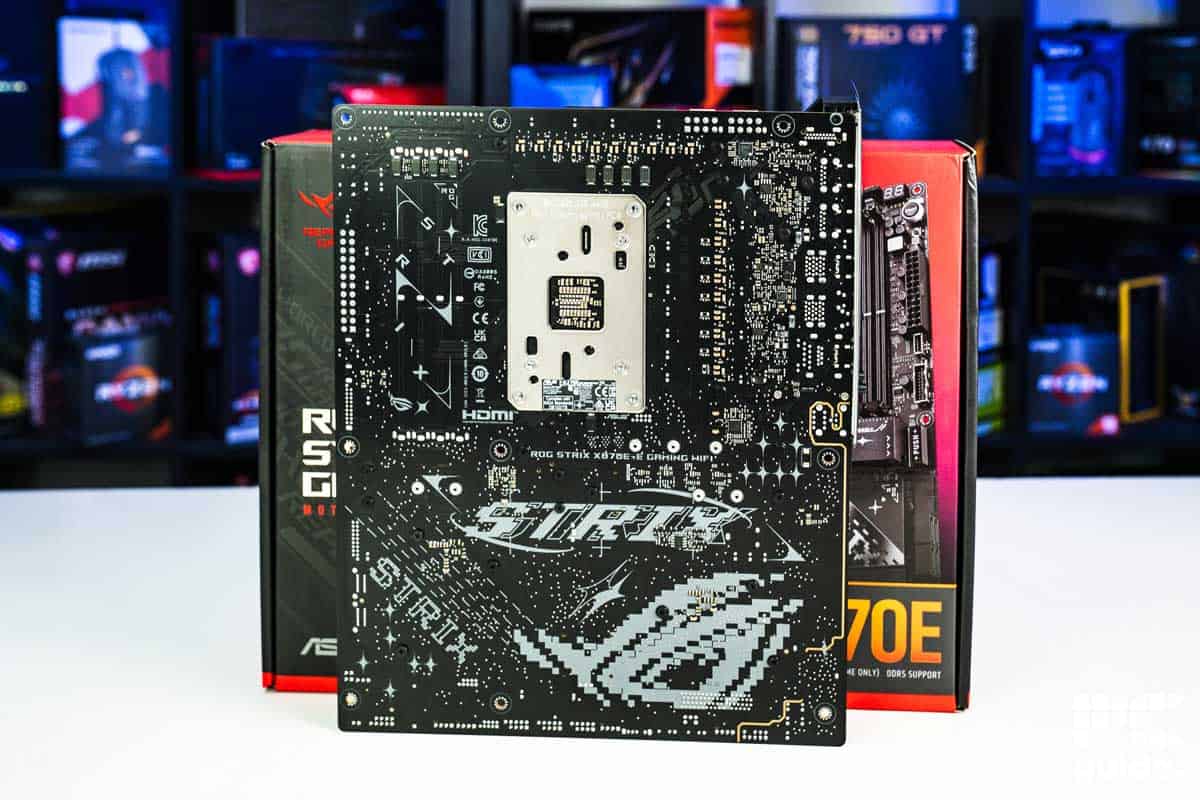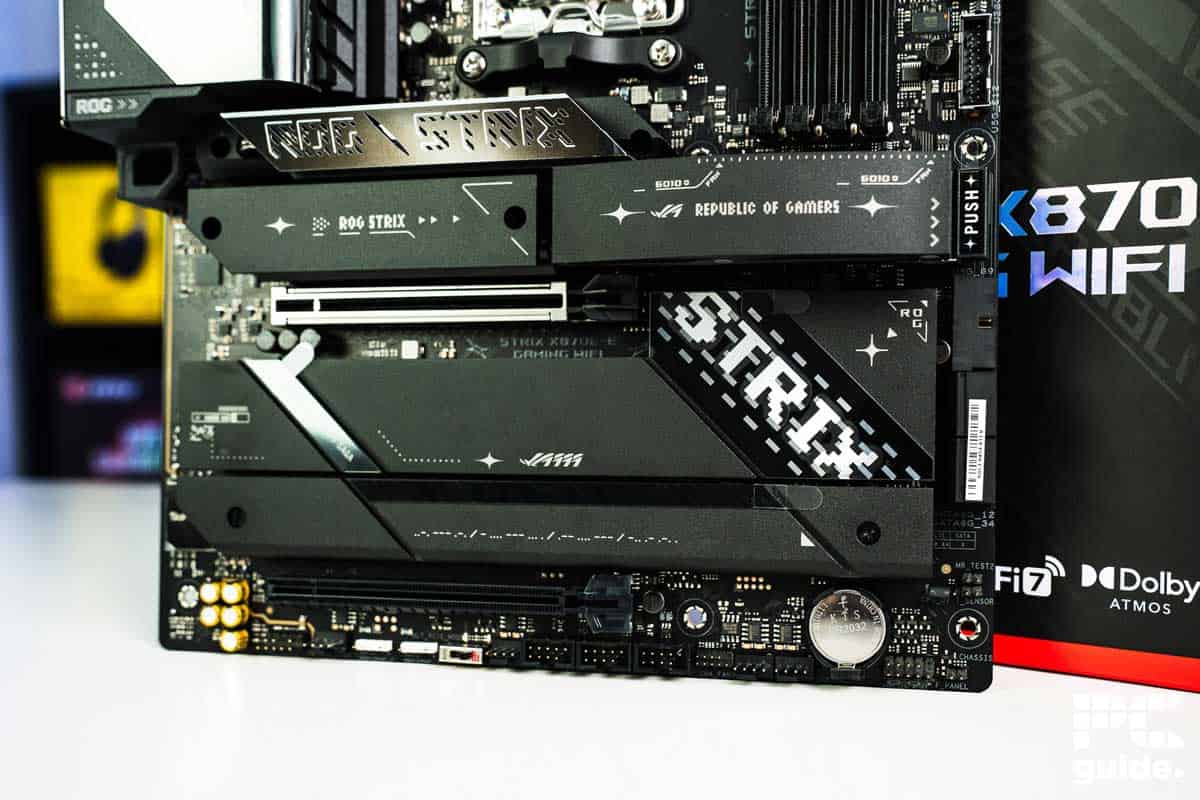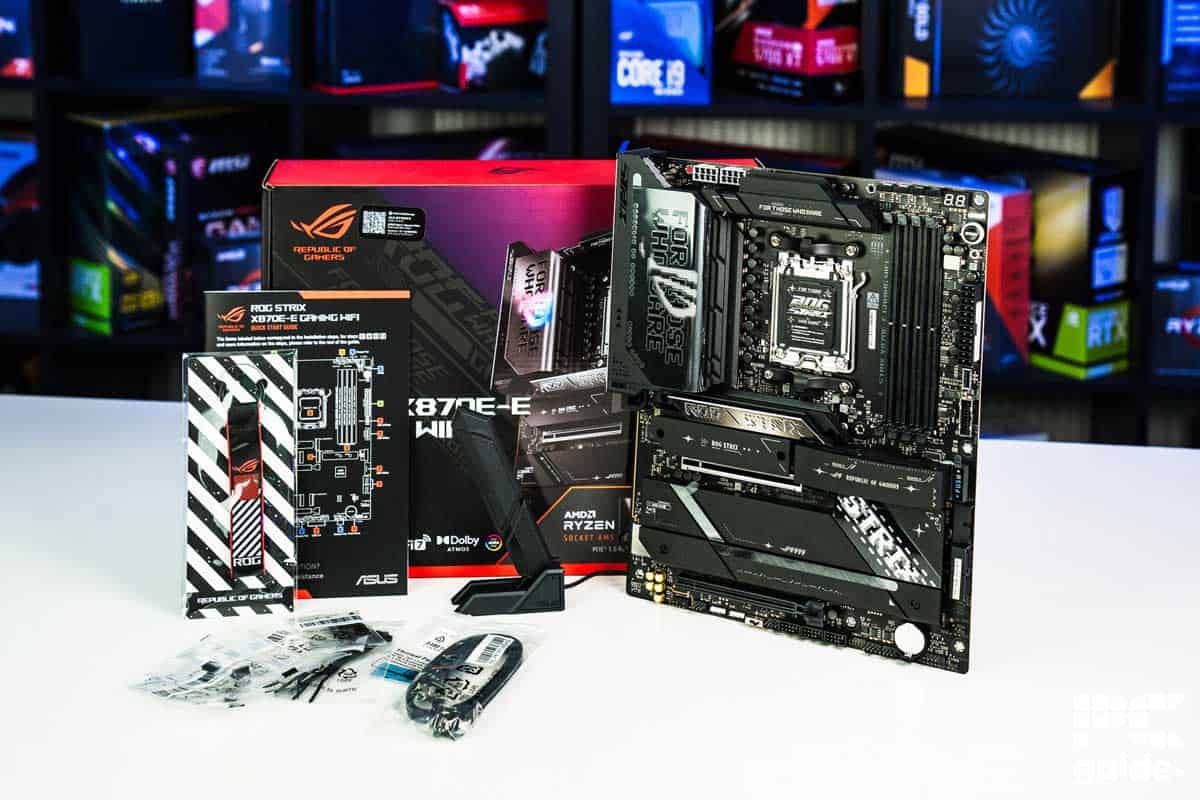Our best motherboard for Ryzen 5 9600X – our top picks tried and tested
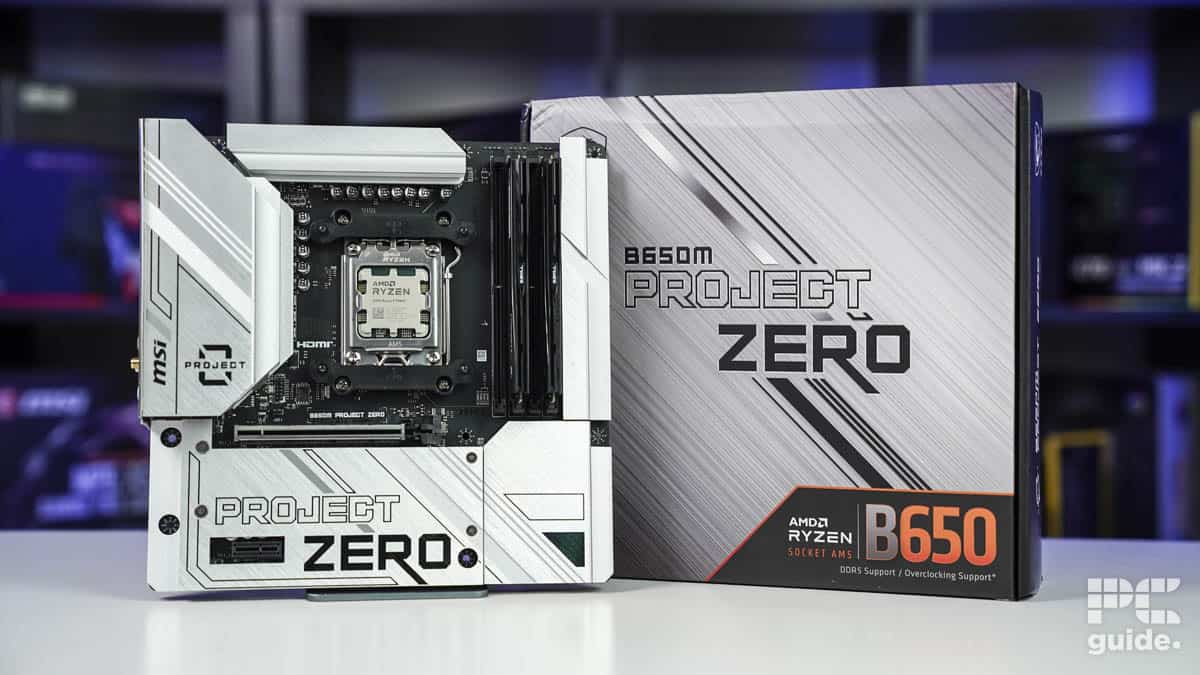
Table of Contents
A great deal of thought should be given to choosing the right motherboard, as it can significantly impact your system’s performance. However, it also depends on the CPU you’ve got or are getting. In this case, the Ryzen 7 9600X is a budget processor, meaning a budget or mid-range motherboard would be the best choice for the maximum value.
That being said, with the 9600X being at the bottom of the tier list from the initial release, you don’t have to go for anything too big or expensive to get its capabilities out there. That’s why, for our recommendation, we chose our recently reviewed MSI B650M Project Zero. Getting a great score in our hands-on testing, we found that it offers a clean and simple solution as an AM5 motherboard and is a good match for the CPU.
But there are plenty of other options you could go for. Depending on your needs and budget, we’ve selected a range of models for you to choose from.
-
Best overall motherboard for the 9600X
MSI B650M PROJECT ZERO
- Socket: AM5 (LGA1718)
- Chipset: B650
- Form Factor : Micro-ATX
- PCIe Version : PCIe Gen 4
- Memory speed : 6400MHz + OC
- Memory capacity : 128GB (4 x 32GB)
-
Best mid-range motherboard for the 9600X
ASUS PRIME X870-P WiFi
- Socket: AM5 (LGA 1718)
- Chipset: X870
- Form Factor: ATX
- PCIe Version: PCIe Gen 5 Storage – PCIe Gen 5 GPU
- Memory Speed: 8000+MT/s (OC)
- Memory Capacity: 192GB DDR5
-
Best high-end motherboard for the 9600X
ASUS ROG Strix X870E-E Gaming WiFi
- Socket: AM5 (LGA 1718)
- Chipset: X870E
- Form Factor: ATX
- PCIe Version: Gen 5 NVMe & Gen 5 GPU
- Memory Speed: 8000+MT/s (OC)
- Memory Capacity: 192GB DDR5
Why we chose the MSI B650M

- Socket: AM5 (LGA1718)
- Chipset: B650
- Form Factor : Micro-ATX
- PCIe Version : PCIe Gen 4
- Memory speed : 6400MHz + OC
- Memory capacity : 128GB (4 x 32GB)
The MSI Project Zero is one of those stealth motherboards that put the connectors on the back and aim to keep your builds a bit more tidy. Going for a bit more elegant design with a shinier white finish to its metal plates, finishing it off and hiding away the more basic and circuitry-covered PCB. This also bulks up its build and quality, giving it that extra nice feel.
It does mean you have to find compatible PC cases that actually support this unique design and feature. This does limit you a bit to what you can go for, but it should be worth the cleaner look it provides, which is where the rest of the features push it down this path, too, as the cooling plates there serve a purpose, too, in keeping those VRMs and parts in check.
Connectivity
There are plenty of connections available on the board as well. The B650 chipset does limit the PCIe gen somewhat in that it’s only PCIe 5 for GPUs and none for the NVMe SSDs onboard. But there’s not going to be that much real difference between one and the other, and it’s still plenty fast for most of your needs. You get one x16 slot, one x1 slot, and two M.2 slots for storage. For RAM, of course, you get four DDR5 slots.
Then, for the actual IO on the back, you have a bunch of USB ports that the motherboard does not skimp on. With a total of seven Type A and two Type C, the Ethernet used offers 2.5 Gbps, with the wireless bringing WiFi 6E speeds that bring plenty of speed to your network as well.
Usability
Being a solid 6-layer PCB and with a hardiness to it that ensures it’s as solid as a rock, the motherboard is as easy to manipulate. But the rear connections do provide a different difficulty in building out your PC, and are certainly different when trying to find the right connector places for everything. That does make it look nice and clean in a build, though, and if your case supports it, might even be easier to sort. The IO shield being pre-installed makes it one less thing to forget during installation.
The BIOS is fairly simple as well, keeping things neat and tidy. With separate areas for each, it does give you an easy time to overclock or update. This allows for getting the best out of your system and making sure it’s up to date and working as intended.
Performance
As found in our testing, the results do show it does fall behind slightly from the X670E we also tested. But it still does very well and drops a couple of seconds or points in comparison. The efficiency of the board is not too bad either, sitting around 4W, as the temperatures do spike up a bit higher, but nothing to be worried about either. It still holds up in terms of extracting the best from the CPU.
Mid-range motherboard for 9600X

- Socket: AM5 (LGA 1718)
- Chipset: X870
- Form Factor: ATX
- PCIe Version: PCIe Gen 5 Storage – PCIe Gen 5 GPU
- Memory Speed: 8000+MT/s (OC)
- Memory Capacity: 192GB DDR5
If you’re looking for a bit more punch and better cooling without spending a lot, we recommend the ASUS Prime X870-P WiFi, which we’ve reviewed in-house. This is a solid mainboard with an X870 chipset and only costs a little more than the MSI B650M Project Zero. The design of this board is pretty stylish, offering a blend of black and white that would suit any build, along with plenty of thermal guards and connections.
While it costs only a little more than the MSI B650, its specifications are much better, as it offers PCIe 5 support for the GPU and storage devices, as well as a maximum memory capacity of 192GB DDR5 RAM running at 8,000+ MT/s (OC). What this means is that you can install as much RAM as you want and the fastest NVMe SSD you can find, and enjoy next-level performance and efficiency.
A neat aspect of this board is that it can handle CPUs higher up on the performance hierarchy, such as the Ryzen 9 9900X and the 9950X, without any issues, meaning the path to upgrades is open. Besides that, it has 2 USB Type-C and 8 Type-A ports along with Wi-Fi 7 connectivity and a 2.5Gbps LAN port.
This means you can connect numerous peripherals and enjoy fast transfer speeds if you’ve an external SSD or HDD connected. Additionally, if you’ve a WiFi 7 router, you can enjoy high speeds via wireless connections. The 2.5Gbps Ethernet port should ensure that if you’ve got a gigabit or multi-gigabit internet plan, you can experience the full bandwidth of that via a wired connection.
Performance
We used the Ryzen 9 9950X and the RTX 4070 Ti to test the efficiency, cooling, and performance of this motherboard. In Blender Monster, we got 261.39 points, which was higher than the ROG Strix X870. The power draw was recorded at 187.637W with a CPU and motherboard temperature of 71.3°C and 35°C, respectively.
In gaming, we ran Cyberpunk 2077 and got 220 FPS, with the motherboard and CPU peaking at 34°C and 66.7°C, respectively, and pulling around 128.309W. So, not only is this motherboard efficient, but it also doesn’t limit the 9950X in any way and keeps itself cool in the process. So, for the Ryzen 5 9600X, this motherboard should be more than enough. You should be able to overclock it to its maximum limit without encountering stability issues, as this board features a 14+2+1 power delivery system.
High-end motherboard for 9600X

- Socket: AM5 (LGA 1718)
- Chipset: X870E
- Form Factor: ATX
- PCIe Version: Gen 5 NVMe & Gen 5 GPU
- Memory Speed: 8000+MT/s (OC)
- Memory Capacity: 192GB DDR5
The ASUS ROG Strix X870E-E Gaming WiFi is an enthusiast-level motherboard that can accommodate any CPU from the Ryzen 7000 and 9000 lineups. If you plan on upgrading the CPU in the future, we recommend this motherboard. If you can get it on sale, it’ll be even better.
This motherboard features PCIe Gen 5 support for storage devices and the GPU, 192GB of maximum memory, and 8000+ MT/s (OC). These specifications are the same as the ASUS PRIME X870-P WiFi, but what makes it better is 18+2+2 VRM and a whole lot more connectivity options.
The triple-stage power delivery system is the same, but the phases are more, meaning the power goes through more steps to get cleaned and stabilized before reaching the CPU, meaning the overhead for overclocking is better with this motherboard. Besides that, it has two USB4 Type-C (40Gbps) ports, one USB 20Gbps Type-C port, and 10 USB 10Gbps ports split between 9 Type-A and one Type-C. So, you should be able to connect to whichever peripheral you want. There is also an HDMI 2.1 port, which is great if you want to run your PC on the integrated graphics of the processors.
On top of that, it has a 5Gbps Ethernet port, so in a way, you’re future-proofing your PC in multiple ways as the AM5 platform is supported till 2027 and can accommodate the future processors and can upgrade your internet connection without worrying whether the ports will be able to handle the bandwidth or not.
Performance
We used the same test bench for this motherboard and ran the same tests, which should give a good idea of the difference between these boards. In Blender Monster, we got 260.38 points with an 189.065W power draw and a maximum motherboard and CPU temperature of 38°C and 74.8°C.
This pairing also showcased excellent gaming performance, with 234 FPS in Cyberpunk 2077, a motherboard temperature of 80.3°C, and a processor temperature of 37°C, all the while pulling 139.467W of power.
How to pick the best motherboard
There are several factors that can influence the choice of motherboard for your build. With the 9600X, a more budget-friendly option, there are plenty of deciding factors to pick from.
Features and connectivity
One of the deciding factors can be what you want from your motherboard. The number of ports and their speed are something that can affect what you can get from your system. It can also affect the rest of your system, being able to connect up effectively and ensure the latest speeds
Compatibility and upgradeability
Of course, you want your CPU working with your motherboard. So you want to get an AM5 socket motherboard to work together, and plenty of chipsets will also be compatible with it. We expect AM5 to also last for a few more generations to keep your upgrade path open.
Budget
One of the main factors is how much you’re spending on the motherboard. Since the 9600X is a cheaper CPU, you don’t exactly want to spend more on a motherboard than on the processor, so you should target something a lot more basic and functional to put more budget towards the rest of your hardware.
What socket do you need for the 9600X?
The 9600X uses the AM5 socket, which is the LGA 1718 pin-out on the motherboard. It’s a move away from the pins being on the processor on the AM4 platform.
What chipsets for the 9600X?
The 9600X is compatible with any AM5 chipset, at the time of the 9600X generation, which covers nine chipsets. These are the X870E, X870, B850, B840, X670E, X670, B650E, B650, and A620. They offer various features and capabilities as laid out by AMD.
What motherboard to pair with 9600X?
Any AM5 motherboard is good for the 9600X. Obviously, you want to match the tier of the two and don’t want to overspend on the motherboard. In our case, we recommend the MSI B650M PROJECT ZERO, along with the ASUS PRIME X870-P WiFi, and the ASUS ROG Strix X870E-E.
Final word
Although not tested on the 9600X itself, the 7900X that was used does have a higher TDP and power behind it, and so does show the MSI B650’s capabilities and ability to keep up. Along with the ease of its use and build quality, it gets our recommendation for the best motherboard for the 9000 series processor. Although it might not be the top choice, neither is the CPU, so it’s best to match the tier and price so you don’t overspend on the less important parts.
Alternate motherboards for the 9600X
-
Gigabyte X670 Aorus Elite AX
- Socket: AM5
- Chipset : X670
- Form Factor: ATX
- PCIe Version: PCIe 5.0
- Memory Speed: 8000 MHz(OC)
- Memory Capacity: 256GB DDR5
-
